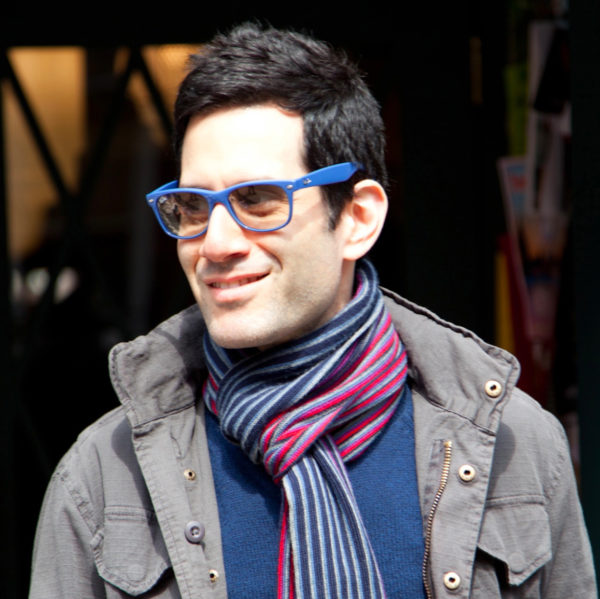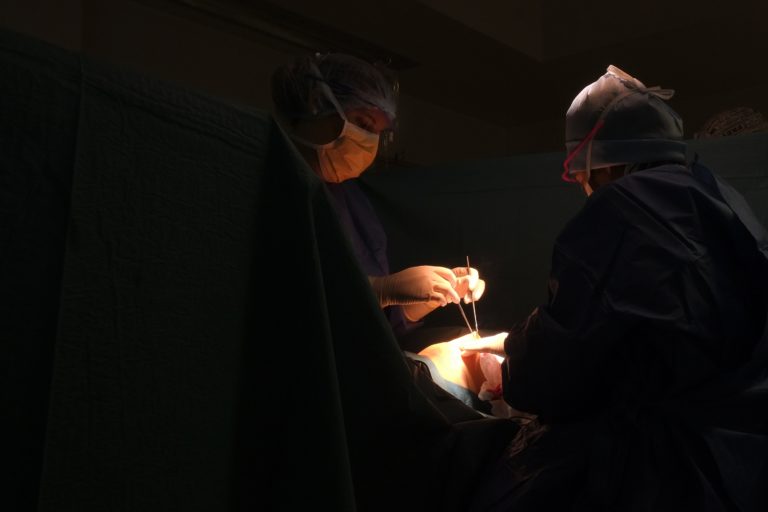
Image by Lee Stonehouse/Flickr (CC BY-NC 2.0)..
Only Air and Light Remained
Lately I’ve been reading My Struggle, the series of Proustian autobiographical novels by the fine Norwegian writer Karl Ove Knausgaard. To open the first volume, Knausgaard discusses modern humanity’s strange and paradoxical relationship with death.
“Death is relayed through two distinct systems,” he writes. “One is associated with concealment and gravity, earth and darkness, the other with openness and airiness, ether and light.” Knausgaard managed, with the full version of this discussion, to swirl up an evocative literary scent that instantly transported me to a moment I hadn’t thought about in over a decade: my maternal grandfather’s burial.
I was in Italy when I learned of Papa’s death back home in New York. The quickest return was via Lyon, and I made my way there aboard a small turboprop with an open cockpit, about a dozen seats, and only three other passengers. The plane flew like a hedgehopper, so low over the Alps that it seemed sure to graze the mountains’ snow-covered shoulders.
Two days later, there it was: the giant maw, like a barely calmed volcano — a dark hole, mouth of loamy outcropping. Two large shovels stood vertical, spiked into the mound of earth beside the grave. The family lined up in pairs to take a turn at scooping up a bit of soil and tossing it down the pit, atop the coffin. Some of my older relatives needed assistance.
I was the last to go. My hands immediately registered the heft of the shovel’s thick handle and leaden pan. I pitched all my weight forward to dig in. The shush of blade sliding through soil was punctuated by the tick and rattle of blade hitting pebble and rock. I dropped my shovelful onto the coffin, and it landed with a thump.
I immediately plunged in again. Thump. And again. Thump. And again and again and again and…
One of my aunts called out to me, “It’s okay, Doug. Put the shovel down,” as if I had lost my senses and taken up a weapon or stepped out onto a window ledge. Maybe I had. I must have made quite a sight, in my charcoal-gray suit and dark-brown derby shoes, driving and shifting furiously, heaving the soil and heaving with sobs.
I continued without breaking rhythm, arms churning, tears streaming down my face. Through my blurred vision, I could make out the two gravediggers stand up bone-straight but hold their discreet distance. This job was mine to do; he was my grandfather. I would not leave it to strangers to complete this portion of his burial.
Funereal rites define themselves largely as a string of successive handoffs and hidings. We enlist undertakers to maneuver our dead and stash the bodies out of view — under sheets, in cloistered preparation rooms, often in shut caskets. Through our proxies, we hinder the flesh’s decay with formaldehyde and methanol, and disguise the skin’s discoloration with dye and thick makeup. Then we have clerics direct our obsequies, whose language will tend to dissemble through euphemism or obscure through foreignness. We conclude with gravediggers (now grave fillers) effecting the ultimate concealment.
Our rituals of death let us off the hook. I pinned myself back on.
Asking others to finalize my grandfather’s interment felt to me like a disavowal of the man Papa had been. By packing him even more tightly within his already sealed coffin, I engaged in an act of closing that levered an odd sort of opening; I acknowledged what we most want to deny.
My act didn’t discomfit my aunt — and many of my other relatives, I learned later — simply because of its refusal to collude in what Knausgaard describes as our “collective act of repression.” It discomfited because of its recognition of the corporeal, as opposed to the conceptual, aspect of death. It is death’s physical side that makes us the most deeply uncomfortable.
Eventually, a cousin of mine — never one to appear outdone — joined me with the second shovel. And soon the mound was gone. Only air and light remained.


